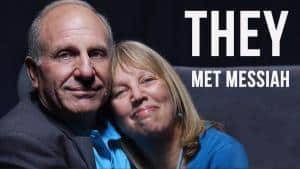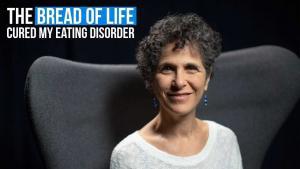Torah Portion for week 15: Exodus 10:1 – 13:16
בֹּא
Bo (Enter!)
What makes a Passover lamb kosher? This week’s Torah portion describes the final plagues which forced the Egyptians to “let my people go.” The focus of the section is the description of the original Passover event and God’s detailed instructions concerning the Passover lamb which would be sacrificed and eaten that night.
Exodus 12 ends with, “All the people of Israel did just as the LORD commanded Moses and Aaron. And on that very day the LORD brought the people of Israel out of the land of Egypt by their hosts” (Exod 12:50, 51). In these verses, Israel’s careful observance of God’s instructions regarding the Passover sacrifice is directly linked to God’s act of redemption, the exodus from Egypt! What exactly would make Israel’s Passover sacrifice kosher so that they might be saved from the angel of death and liberated from Egyptian slavery to serve the living God?
First and foremost, the lamb was to be perfect, and precautions were taken to make sure that it would remain perfect until the time of the sacrifice. God says,
“Tell all the congregation of Israel that on the tenth day of this month every man shall take a lamb according to their fathers’ houses, a lamb for a household. . . . Your lamb shall be without blemish, a male a year old. . . . and you shall keep it until the fourteenth day of this month, when the whole assembly of the congregation of Israel shall kill their lambs at twilight.” (Exod 12:3, 5-6)
The blood of the lamb would then be applied to the lintel and doorposts of the house and the family would eat the roasted lamb with bitter herbs and unleavened bread (12:7-8), being careful not to break any of its bones (12:46). Every family member was to remain in the house all night long (12:22), under the protection of the blood of the Passover lamb; Moses explained God’s instructions, “For the LORD will pass through to strike the Egyptians, and when he sees the blood on the lintel and on the two doorposts, the LORD will pass over the door and will not allow the destroyer to enter your houses to strike you” (Exod 12:23).
John’s Gospel, from beginning to end, presents Yeshua the Messiah as God’s Passover Lamb. He begins with the testimony of John the Baptist who pointed to Yeshua and said, “Behold, the Lamb of God, who takes away the sin of the world!” (John 1:29). The sacrificial death of the Passover Lamb would take place in Jerusalem, at Yeshua’s final Passover.
John tells us that, six days before the Passover, Yeshua came to Bethany, which was a suburb of Jerusalem (John 12:1). On the following day, the 10th of Nisan, Yeshua made his triumphal entry into Jerusalem and presented himself at the temple, the house of God, as the spotless Passover lamb. There, in the following days, Yeshua was repeatedly tested by the religious leadership and found to be “without blemish.”
John emphasizes that Yeshua was tried and crucified on the eve of the Passover, that is, the fourteenth of Nisan (John 19:14). That afternoon, beginning about 3 pm, the priests would be busy in the temple slaughtering Passover lambs for those who would celebrate the feast that evening. In the very hour that the priests started their work, Yeshua, the Passover Lamb of God, was using his final breath to proclaim, “It is finished!” (John 19:30).
With Passover night rapidly approaching, the Jewish leaders sought to hasten the death of those being crucified by having their legs broken, so that they could be buried before the Sabbath began at sundown. But Yeshua was spared this final indignity, having already died. Instead a Roman spear poured out Yeshua’s blood upon the land (John 19:31-34).
Surprisingly, John emphasizes, “These things took place that the Scripture might be fulfilled: ‘Not one of his bones will be broken’” (John 19:36). John’s declaration was not based on a passage from the prophets, but on the detailed instructions concerning the original Passover lamb about which Israel was instructed, “You shall not break any of its bones” (Exod 12:46).
John sees this “coincidence” as the hand of a sovereign God who orchestrated both the events and the seasons in order to reveal the true significance of Yeshua’s sacrifice. This seemingly minor detail is, in fact, the final confirmation that Yeshua is indeed God’s perfect Passover Lamb, by whose blood God gives life and redemption to Israel, and to the world.






















